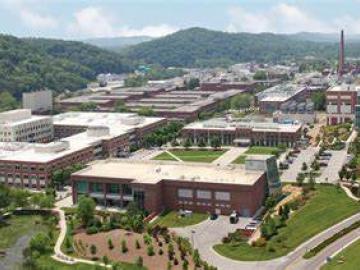Filter News
Area of Research
News Topics
- (-) 3-D Printing/Advanced Manufacturing (115)
- (-) Polymers (31)
- Advanced Reactors (32)
- Artificial Intelligence (81)
- Big Data (48)
- Bioenergy (86)
- Biology (93)
- Biomedical (56)
- Biotechnology (20)
- Buildings (52)
- Chemical Sciences (55)
- Clean Water (28)
- Climate Change (90)
- Composites (25)
- Computer Science (179)
- Coronavirus (46)
- Critical Materials (23)
- Cybersecurity (35)
- Decarbonization (68)
- Education (3)
- Element Discovery (1)
- Emergency (1)
- Energy Storage (106)
- Environment (187)
- Exascale Computing (33)
- Fossil Energy (4)
- Frontier (37)
- Fusion (51)
- Grid (58)
- High-Performance Computing (78)
- Hydropower (11)
- Irradiation (3)
- Isotopes (46)
- ITER (7)
- Machine Learning (42)
- Materials (137)
- Materials Science (129)
- Mathematics (6)
- Mercury (12)
- Microelectronics (2)
- Microscopy (50)
- Molten Salt (8)
- Nanotechnology (60)
- National Security (54)
- Net Zero (10)
- Neutron Science (126)
- Nuclear Energy (100)
- Partnerships (37)
- Physics (58)
- Quantum Computing (27)
- Quantum Science (63)
- Renewable Energy (2)
- Security (23)
- Simulation (38)
- Software (1)
- Space Exploration (24)
- Statistics (2)
- Summit (56)
- Sustainable Energy (114)
- Transformational Challenge Reactor (7)
- Transportation (91)
Media Contacts

Rishi Pillai and his research team from ORNL will receive a Best Paper award from the American Society of Mechanical Engineers International Gas Turbine Institute in June at the Turbo Expo 2024 in London.

Rigoberto “Gobet” Advincula, a scientist with joint appointments at ORNL and the University of Tennessee, has been named a Fellow of the American Institute for Medical and Biological Engineering.

The Society of Manufacturing Engineers has honored three Oak Ridge National Laboratory researchers with the 2024 SME Susan Smyth Outstanding Young Manufacturing Engineer Award.

ORNL’s Erin Webb is co-leading a new Circular Bioeconomy Systems Convergent Research Initiative focused on advancing production and use of renewable carbon from Tennessee to meet societal needs.

Scientists at ORNL have developed 3D-printed collimator techniques that can be used to custom design collimators that better filter out noise during different types of neutron scattering experiments
ORNL scientists have determined how to avoid costly and potentially irreparable damage to large metallic parts fabricated through additive manufacturing, also known as 3D printing, that is caused by residual stress in the material.

Canan Karakaya, a R&D Staff member in the Chemical Process Scale-Up group at ORNL, was inspired to become a chemical engineer after she experienced a magical transformation that turned ammonia gas into ammonium nitrate, turning a liquid into white flakes gently floating through the air.

Chelsea Chen, a polymer physicist at ORNL, is studying ion transport in solid electrolytes that could help electric vehicle battery charges last longer.

Corning uses neutron scattering to study the stability of different types of glass. Recently, researchers for the company have found that understanding the stability of the rings of atoms in glass materials can help predict the performance of glass products.

Researchers at ORNL became the first to 3D-print large rotating steam turbine blades for generating energy in power plants.




